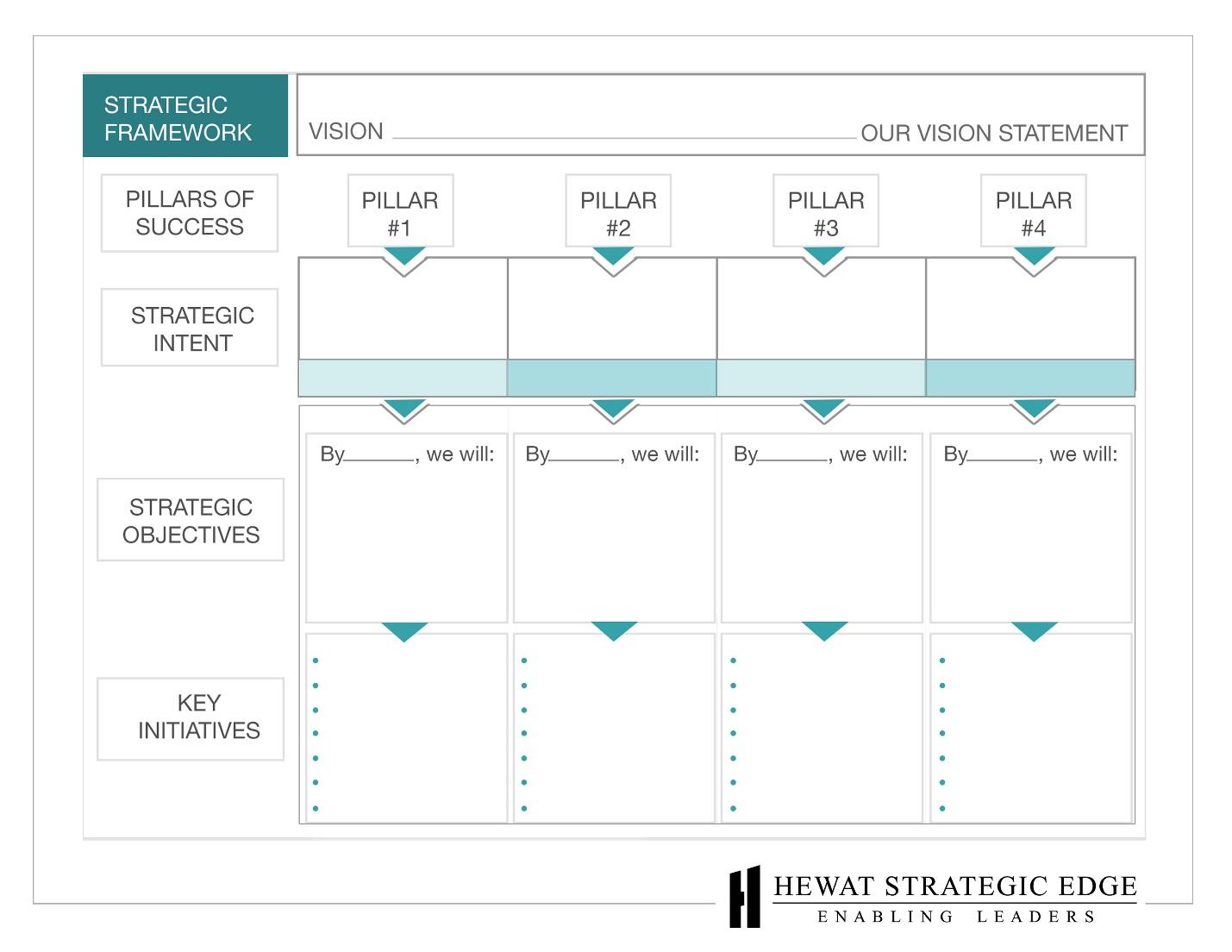An objective or measurable step is required to achieve any strategy.
That is why Strategic Objectives is one of the five elements of our Strategic Framework. It starts with a Vision Statement, it follows with Pillars of Success and then we develop Strategic Objectives. These are followed by Measures (dashboard) and Key Initiatives.

In sports, individuals and teams need to know what results they have to achieve in order to win. Similarly, whether you are in a nonprofit, association or business, you need to know what you are expected to produce or achieve, in order to be successful. It is important to all organizations’ success that everyone has the same clear understanding of expectations.
This clear understanding will help to reduce disagreements about the level of success. It will make it easier to communicate expectations and it will enable us to recognize progress.
Good Strategic Objectives
Our Strategic Framework includes specific Strategic Objectives for each Pillar of Success. A Strategic
Objective should include:
- Outcome – an overall result you want to achieve
- Measurement – a calibration of the outcome: and
- Timeframe, a specific date or deadline for the outcome
An Example of a Strategic Objective
A simple example is: We will achieve revenue from new products (outcome), totalling 15% of sales (measurement), by March 2023 (timeframe).
A Strategic Objective lacking any of these three components will render it more like an aspiration rather than an effective Strategic Objective.
SMART Criteria
Another good way to describe good Strategic Objectives are those that meet SMART criteria:
- Specific – exactly what will be accomplished?
- Measurable – How will we know when we have reached this objective?
- Attainable – Is the achievement of this objective realistic with effort and commitment?
- Relevant – Why is this objective significant to our organization?
- Time-bound – When will this goal be achieved?
Keep in mind that Strategic Objectives should only be developed for areas in which you have some influence and/or control. For example, we cannot control the economy. If we are a division or department of a larger organization, we cannot control resources and actions outside of our authority.
Focus on the Word Strategic
Moreover, it is useful to remind ourselves that we should put the emphasis on the word strategic. A definition of strategic is “of great importance within an integrated whole or to a planned effect”. In our consulting and facilitation practice, we promote the benefits of fewer but very powerful Strategic Objectives – ones that will encompass activities of great importance within the organization and that are linked back to the Pillars of Success and the Vision we have set for ourselves.
Strategic Objectives and Employees
Strategic Objectives need to be communicated to employees in a way that they can see their role in the overall achievement. This is very critical. People need to get up in the morning knowing why they are going to work. This means knowing how they are expected to contribute to their organization’s success. Strategic Objectives are an organizations way of putting a stake in the ground – saying this is what success looks like. Strategic Objectives can be the basis for translating strategy into concrete actionable plans. It can be the basis for employee motivation to chase meaningful accomplishments.
‘If you aim at nothing, you’re going to hit nothing. So, if you don’t set goals, then you have nowhere to go.” Taylor Lautner.
Strategic Objectives are part of the roadmap to any organization’s success.

